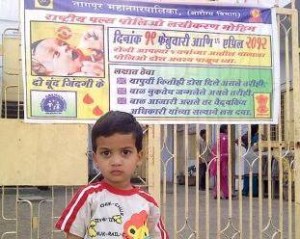India completes three years without any polio case
 India has completed three years without reporting any case of polio in January 2014. It is only the second time in the history that a disease is being eliminated in India through immunisation after small pox in May 1980.
India has completed three years without reporting any case of polio in January 2014. It is only the second time in the history that a disease is being eliminated in India through immunisation after small pox in May 1980.
Officially the World Health Organisation (WHO) will certify India as polio-free on 11 February 2014. The WHO on 24 February 2012 removed India from the list of countries with active endemic wild polio transmission.
Once India is declared polio-free, the entire WHO region would also become polio free.
India’s being declared polio-free is particularly important because it was the only country in the South East Asian region with polio cases. The number of polio cases came down from 741 in 2009 to 42 in 2010 and just one in 2011 reported from West Bengal.
India won the war against polio through intense Pulse Polio Immunisation under the Global Polio Eradication Initiative (GPEI). The Pulse Polio Immunisation programme was launched in 1988 by Rotary International in collaboration with the World Health Organisation (WHO). Under the Polio Immunisation programme, over 17 crore children were vaccinated in each round of vaccination with the help of 24 lakh vaccinators.
Poliomyelitis often called polio or infantile paralysis is an acute, viral, infectious disease spread from person to person, primarily via the fecal-oral route. Poliomyelitis was first recognized as a distinct condition by Jakob Heine in 1840. Its causative agent, poliovirus, was identified in 1908 by Karl Landsteiner.
Poliomyelitis is caused by infection with a member of the genus Enterovirus known as poliovirus (PV). This group of RNA viruses colonize the gastrointestinal tract – specifically the oropharynx and the intestine. The incubation time (to the first signs and symptoms) ranges from three to 35 days, with a more common span of six to 20 days.
Three serotypes of poliovirus have been identified—poliovirus type 1 (PV1), type 2 (PV2), and type 3 (PV3)—each with a slightly different capsid protein. PV1 is the most commonly encountered form, and the one most closely associated with paralysis.
Image credit: This photograph is taken by Ganesh Dhamodkar (Wikimedia Commons). Access source link here


